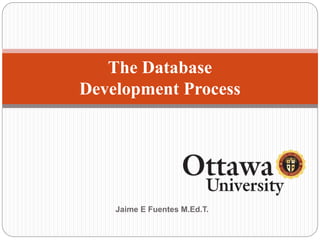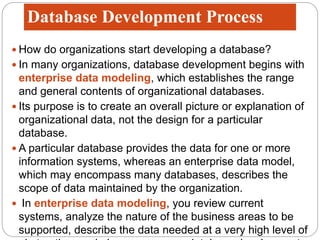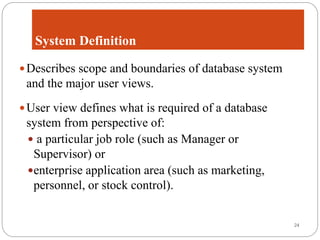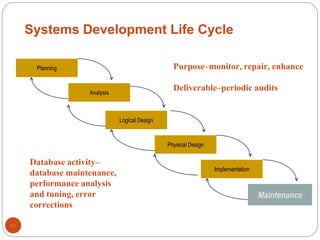The document outlines the database development process, emphasizing the importance of understanding enterprise data modeling and the various stages involved, including planning, analysis, design, and maintenance. It discusses two approaches to development, the traditional Systems Development Life Cycle (SDLC) and prototyping, as well as the roles and responsibilities of individuals involved in database projects. The content highlights the critical need for effective project management and documentation to guide successful implementation and maintenance of database systems.

















































































